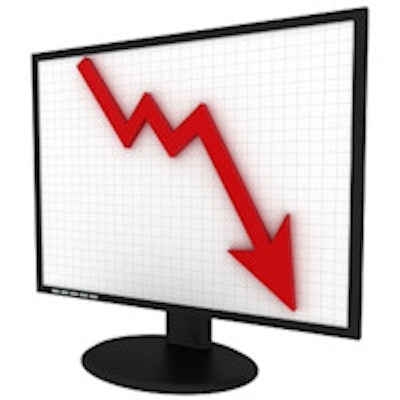
A new report from the American Cancer Society (ACS) estimates that fewer Americans will die from cancer in 2016 compared to previous years, continuing a trend that has been in force since 1991. The decline translates into 1.7 million fewer deaths from cancer.
Driving the declining cancer death rate is a steady reduction in smoking, as well as advances in cancer prevention, early detection, and treatment, according to the ACS report, which was published January 7 in CA: A Cancer Journal for Clinicians. Men appear to be the major beneficiaries of the trend, with cancer mortality falling 1.8% per year in men compared to 1.4% per year in women from 2003 to 2012.
The report tracks cancer incidence and mortality from 1991, when cancer mortality peaked, through 2012, and it also provides estimates for 2016. The report predicts that there will be 1,685,210 new cases of cancer in the U.S. this year -- or the equivalent of 4,600 new cases per day. It projects 595,690 cancer deaths, or 1,600 deaths per day.
Death rates have been declining for all four major cancer sites: lung, breast, prostate, and colon/rectum, with lung cancer still accounting for 27% of all cancer deaths.
Lower tobacco use led to a plunge of 28% in the lung cancer death rate between 1990 and 2012 among men, and 13% between 2002 and 2012 among women. Tobacco control efforts adopted after the first surgeon general's report on smoking in 1964 have resulted in 8 million fewer premature smoking-related deaths, according to the report.
Death rates from breast cancer in women have fallen 36% from peak rates in 1989, while death rates from prostate and colorectal cancers have each fallen 50% from their peak, a trend the report attributes to early detection and treatment.
The news on cancer incidence is a mixed bag for men: Overall cancer incidence declined 3.1% per year in men from 2009 to 2012, but half of that drop is due to a decline in diagnoses of prostate cancer as prostate-specific antigen (PSA) testing falls. Overall cancer incidence was stable in women.
Other major points of the report are as follows:
- Men have a 42% lifetime probability of being diagnosed with an invasive cancer, compared with 38% for women.
- Brain cancer is now the leading cause of cancer death in children and adolescents up to the age of 19, surpassing leukemia. The change is the result of therapeutic advances against leukemia.
- Thyroid cancer is the cancer with the fastest growth rate, at more than 5% per year in both men and women, due in part to what the report calls "overdiagnosis because of the increased use of advanced imaging techniques."
- There was a 3% decline per year in colorectal cancer incidence and death rates in both men and women from 2003 to 2012. However, rates increased 1.8% per year from 1992 to 2012 in men and women younger than 50, who fall outside established guidelines for screening those at average risk of cancer.
- Breast cancer is the leading cause of cancer death in women ages 20 to 59, while lung cancer is the leading cause in women 60 and older.
- Leukemia is the leading cause of cancer death in men 20 to 39 years, while lung cancer causes most cancer deaths in men 40 and older.
The report compiles incidence data from the U.S. National Cancer Institute's Surveillance, Epidemiology, and End Results (SEER) database, as well as the U.S. Centers for Disease Control and Prevention's National Program of Cancer Registries and the North American Association of Central Cancer Registries. Mortality data are derived from the National Center for Health Statistics.



















